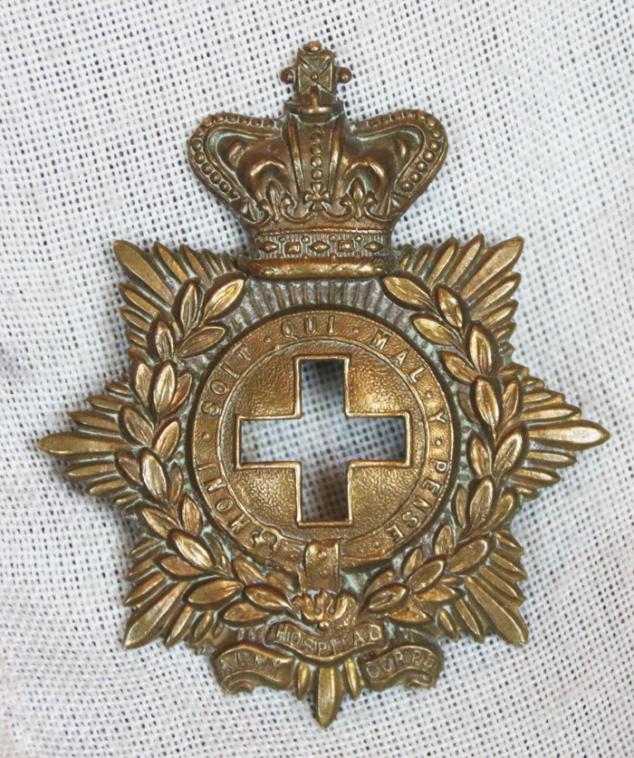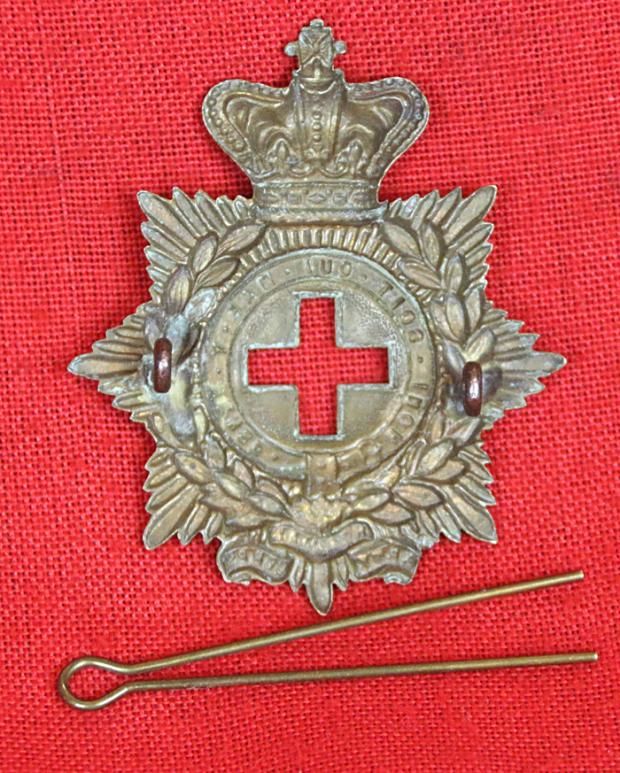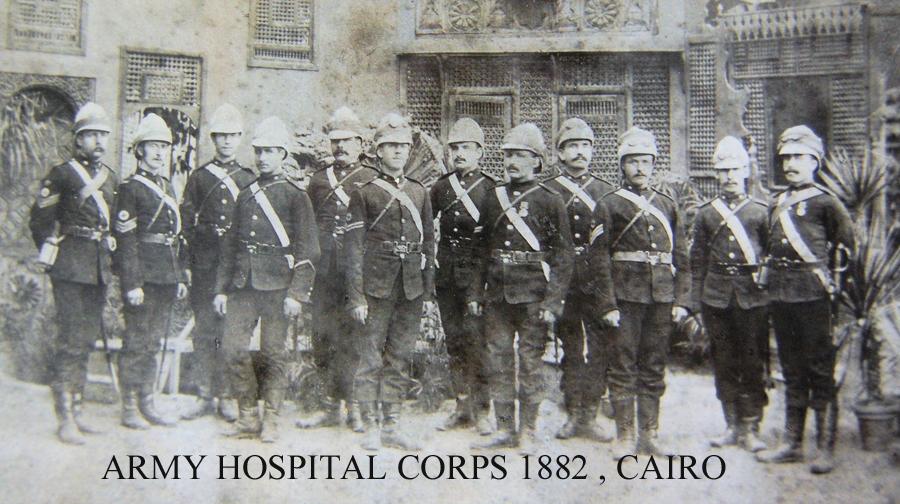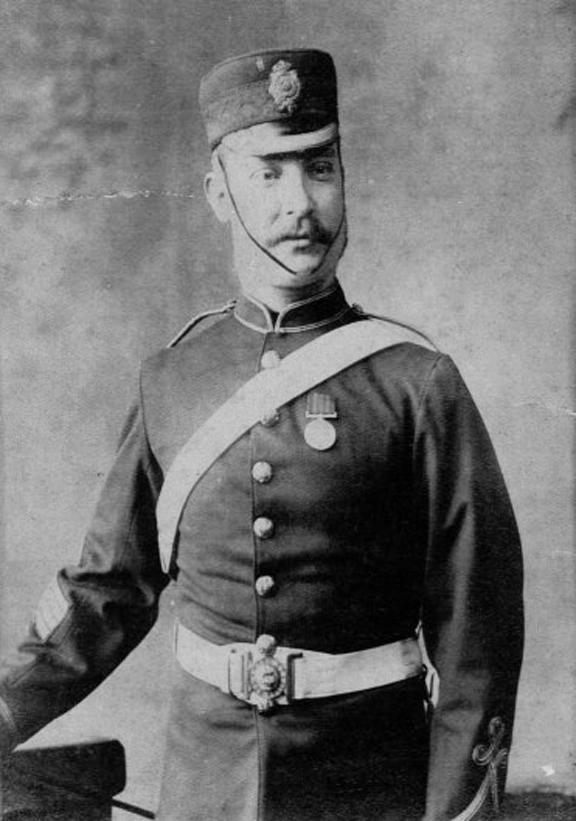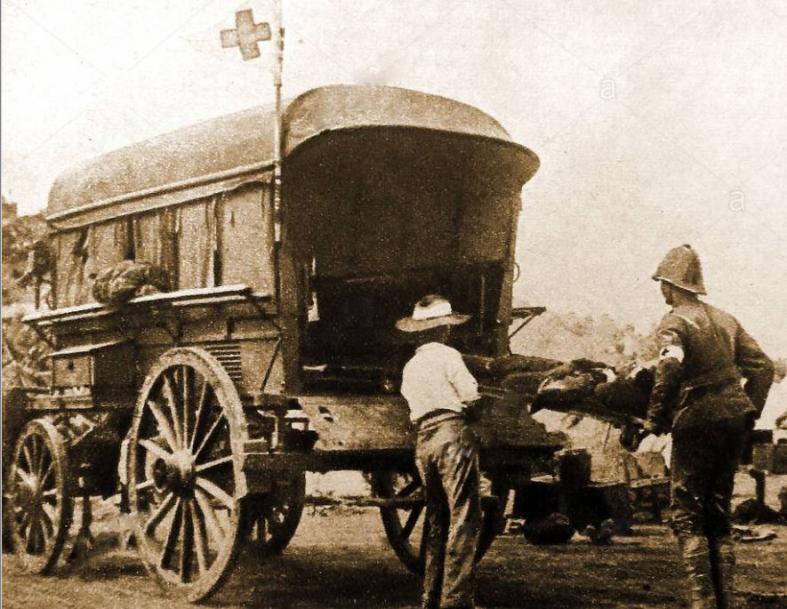A Really Most Rare Original Zulu War Veteran's Souvenir From Isandhlwana, Victorian Army Hospital Corps Helmet Badge. The Surgeon Major, and 1 Officer and 10 Army Hospital Corps Other Ranks Were Slaughtered at Isandhwana 1879. Found in the Medics Waggon
Surgeon Major Peter Shepherd, a first-aid pioneer, was killed in the battle at Isandhlwana alongside his lieutenant and his ten Army Hospital Corps orderlies see the list in the photo gallery. A fabulous and scarce artefact of the early years of the British military medical and hospital service, formed just after the days of Florence Nightingale in the Crimean War. One of the smallest Army Corps of the Victorian era. It provided the medical nursing services for the expeditionary forces for both the Zulu War and Egypt War field hospitals The Army Hospital Corps was raised by Royal Warrant on 1 August 1857 to provide orderlies for military hospitals, except those in India. It replaced the Medical Staff Corps, which had been embodied on 22 June 1855. In December 1859, the name Medical Staff Corps ceased to appear in the returns of the distribution of the army and was substituted with the name Army Hospital Corps. It was found at Isandhlwana at the inspection of the massacre by Chelmsford and his staff. See the London Illustrated News picture in the gallery.
The first transfers from the Medical Staff Corps to the Army Hospital Corps took place on 31 October 1859, when No 4 MSC William Stawtree and No 461 MSC Benjamin Rawlins became No 1 AHC and No 2 AHC respectively with the rank of Sergeant Major. On 30 November 1859, No 2 MSC Blake John became No 275 in the AHC with the rank of Sergeant Major. Captain and Brevet Major Stonehouse George Bunbury MSC, who on 22 June 1855 had been placed in charge of the Medical Staff Corps, became a Captain in the new Army Hospital Corps on 3 February 1860.
In 1858, the organisation of military hospitals, the treatment of the sick and the provision for their transport from the battle field during the Crimean War came under the scrutiny of the Select Committee on the Medical Department of the Army, chaired by Lord Sidney Herbert. Men generally joined the Army Hospital Corps after two to three years' military service and had to undergo a probationary period of six months before being accepted into the corps. They enlisted for twelve years under the Army Enlistment Act of 1870, of which six years were with the Colours and six years with the Reserve. However, while soldiers in India served for the full six years with the Colours, those in Britain could pass into the reserves after three years. From 1878, the AHC fell under the Cardwell Short Service System, and recruits now served for 3 years with the Colours and 9 years with the Reserve. After 1877, the number of soldiers transferring from the infantry declined, as from 1875 the AHC enlisted men directly from civil life and trained them in both military and hospital duties. The AHC had been so undermanned that it found it difficult to fill the home hospitals, those in the colonies, as well as provide the nursing manpower for expeditionary forces, as was borne out by the Zulu and Egyptian campaigns. In consequence of the great pressure placed upon the department during the 1882 Egyptian Campaign, and the complaints made about the nursing of the sick, the new Medical Staff Corps was augmented by an additional 200 men.
On 23 June 1898, the warrant officers, non commissioned officers and men of the Medical Staff Corps merged with the commissioned officers of the Army Medical Staff to form the Royal Army Medical Corps. The Battle of Isandlwana (alternative spelling: Isandhlwana) on 22 January 1879 was the first major encounter in the Anglo-Zulu War between the British Empire and the Zulu Kingdom. Eleven days after the British commenced their invasion of Zululand in Southern Africa, a Zulu force of some 20,000 warriors attacked a portion of the British main column consisting of about 1,800 British, colonial and native troops and perhaps 400 civilians. The Zulus were equipped mainly with the traditional assegai iron spears and cow-hide shields,but also had a number of muskets and antiquated rifles.
The British and colonial troops were armed with the modern16 Martini–Henry breechloading rifle and two 7-pounder mountain guns deployed as field guns, as well as a Hale rocket battery. Despite a vast disadvantage in weapons technology, the Zulus ultimately overwhelmed the British force, killing over 1,300 troops, including all those out on the forward firing line, most of them Europeans, including field commanders Pulleine and Durnford. Only five Imperial officers survived (including Lieutenant Henry Curling and Lieutenant Horace Smith-Dorrien), and the 52 officers lost was the most lost by any British battalion up to that time. Amongst those killed was Surgeon Major Peter Shepherd, a first-aid pioneer. The Zulu army suffered anywhere from 1,000 to 3,000 killed 67mm high
Code: 23755

